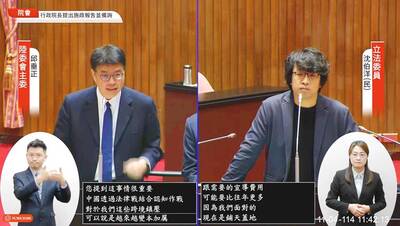Modern civilization and development depend on sufficient energy supply. We need it for lighting, heating, cooling and mobility. Unfortunately the production of energy is increasingly recognized as a major source of environmental problems.
How to satisfy the growing energy demands in an environmentally safe and economically sound manner is of global concern. The utilization of renewable energy sources may prove to be a solution to overcome this challenge.
Unfortunately the costs to produce renewable energy are perceived as generally higher than those for fossil fuels. This has lead to limited use of renewable sources in the global energy market.
However, the cost differential between renewable energy and fossil and nuclear energy has been exacerbated by long-term support provided by governments in the form of direct or indirect subsidies.
Since the beginning of the nineties, Germany has been a leader in renewable energies, in both science and legislation.
The legal framework, the Renewable Energy Act implemented in April 2000, regulates take-off obligations and fixed price agreements. Since 1998 Germanys renewable energy production has grown steadily from 5.2 % to 8 % in 2002. The projected goal is 14 % by 2010.
The utilisation of wind energy in Germany is booming. Up to 15,000 wind energy plants are installed in the country. Long term plans, by 2030, forecast possible power generation from land and sea wind parks will account for 25% of the total energy needs in Germany. The next steps in technological development are happening now with the introduction of off-shore wind turbines with a capacity of 5 MW.
The development of photovoltaic systems is also very advanced in Germany. Just two weeks ago the world's largest solar power plant (5 MWp) opened in Leibzig, covering over 20 hectares of a former landfill. Germany is the largest producer of solar cells in Europe, and worldwide, is second only to Japan. This year the German PV market is growing at a rate of 50%.
German energy offers high potential for future energy generation. Scientists estimate that up to 60% of Germany power supply may be generated from geo-thermal energy.
Another major source of CO2 pollution and energy consumption is transport. Worldwide car manufacturers are researching new technologies. Low pollution and low fuel consumption are important features for today's customers.
But the ultimate response to calls for "'zero emissions" will be fuel cell powered cars generating electricity from hydrogen and oxygen. What seems like science fiction is fast becoming reality: In 2004 DaimlerChrysler is putting 60 fuel cell A-class cars on streets worldwide for prolonged, everyday testing. In this way DaimlerChrysler is demonstrating technological leadership in the field of sustainable mobility.
To promote the development of renewable energy abroad the "Export-Initiative Renewable Energy", was implemented by the German government in 2002. Moreover the German government arranged a world conference in 2004: RENEWABLES 2004, which showcased the latest developments in this field.
Because of German government initiatives and Taiwan's increasing awareness of environmental policy, the German Trade Office Taipei actively promotes the application of renewable energies in Taiwan. The result was a two-day-symposium "Renewable Energies -- Technology for a Sustainable Tomorrow" in May this year. German experts in the fields of politics, science and economy shared their experiences and latest developments to an interested Taiwanese audience.
The German Trade Office Taipei will continue to promote business and research cooperation in the field of renewable energy with technical seminars, trade delegations and case-by-case consulting for German technology companies.

CALL FOR SUPPORT: President William Lai called on lawmakers across party lines to ensure the livelihood of Taiwanese and that national security is protected President William Lai (賴清德) yesterday called for bipartisan support for Taiwan’s investment in self-defense capabilities at the christening and launch of two coast guard vessels at CSBC Corp, Taiwan’s (台灣國際造船) shipyard in Kaohsiung. The Taipei (台北) is the fourth and final ship of the Chiayi-class offshore patrol vessels, and the Siraya (西拉雅) is the Coast Guard Administration’s (CGA) first-ever ocean patrol vessel, the government said. The Taipei is the fourth and final ship of the Chiayi-class offshore patrol vessels with a displacement of about 4,000 tonnes, Lai said. This ship class was ordered as a result of former president Tsai Ing-wen’s (蔡英文) 2018

‘SECRETS’: While saying China would not attack during his presidency, Donald Trump declined to say how Washington would respond if Beijing were to take military action US President Donald Trump said that China would not take military action against Taiwan while he is president, as the Chinese leaders “know the consequences.” Trump made the statement during an interview on CBS’ 60 Minutes program that aired on Sunday, a few days after his meeting with Chinese President Xi Jinping (習近平) in South Korea. “He [Xi] has openly said, and his people have openly said at meetings, ‘we would never do anything while President Trump is president,’ because they know the consequences,” Trump said in the interview. However, he repeatedly declined to say exactly how Washington would respond in

WARFARE: All sectors of society should recognize, unite, and collectively resist and condemn Beijing’s cross-border suppression, MAC Minister Chiu Chui-cheng said The number of Taiwanese detained because of legal affairs by Chinese authorities has tripled this year, as Beijing intensified its intimidation and division of Taiwanese by combining lawfare and cognitive warfare, the Mainland Affairs Council (MAC) said yesterday. MAC Minister Chiu Chui-cheng (邱垂正) made the statement in response to questions by Democratic Progressive Party (DPP) Legislator Puma Shen (沈柏洋) about the government’s response to counter Chinese public opinion warfare, lawfare and psychological warfare. Shen said he is also being investigated by China for promoting “Taiwanese independence.” He was referring to a report published on Tuesday last week by China’s state-run Xinhua news agency,

‘NOT SUBORDINATE’: Only Taiwanese can decide the nation’s future, and people preserving their democratic way of life is not a provocation, President William Lai said Taiwan does not want China’s “one country, two systems,” and must uphold its freedom and democracy as well as resolve to defend itself, President William Lai (賴清德) said yesterday, rejecting Beijing’s latest bid to bring the country under Chinese control. The president made the remarks while attending a commissioning ceremony for Taiwan’s first battalion of M1A2T Abrams tanks in Hsinchu County’s Hukou Township (湖口). The tanks are made by General Dynamics, a major US defense contractor. China this week said it “absolutely will not” rule out using force over Taiwan, striking a much tougher tone than a series of articles in state media